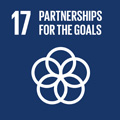- Docente: Alessandra Scagliarini
- Credits: 3
- SSD: VET/05
- Language: Italian
- Teaching Mode: In-person learning (entirely or partially)
- Campus: Bologna
- Corso: Second cycle degree programme (LM) in Health Professions of Prevention Sciences (cod. 8878)
-
from Nov 07, 2025 to Jan 26, 2026
Learning outcomes
The student is familiar with infectious and parasitic agents and related diseases that may affect animals intended for human nutrition with implications for public health, livestock production
Course contents
The course will examine zoonoses through a One Health framework, applying interdisciplinary concepts and systems thinking. The course will introduce the intrinsic and extrinsic determinants underlying the occurrence of endemic, emerging and re-emerging zoonotic diseases as well as their control, considering the dynamics of environmental, demographic and socio-cultural-economic factors within different socio-ecological contexts.
Introductory lecture: In the Anthropocene, human interaction with nature and animals has changed considerably. This has been brought about by the domestication of animals, the expansion of agriculture into natural ecosystems, urbanisation and the industrialisation of food systems. About 60% of all infectious agents known to humans have a reservoir in domestic, synatropic and wild animals. The connections between humans, animals and the environment make it necessary to collaborate across sectors to understand and reduce risks and consequences on health and welfare. The One Health approach offers opportunities for synergistic expertise to address complex health threats to people, animals and the environment and highlights the need for specialists in multiple sectors. To this aim; European agencies and international organisations have come together to launch the One Health approach to improve understanding of how diseases potentially capable of generating pandemics emerge and spread. European Interagency Collaboration strategy and the Quadripartite Agreement will be illustrated.
Epidemiology concepts: Ecology of diseases: disease behaviour in animal populations in space and time; modes of transmission and maintenance of infections in nature: factors related to environment, hosts, aetiological agents. Frequency measures of morbid events: prevalence, incidence, morbidity and mortality.
Principles and methods of sampling: quantitative and qualitative aspects. Descriptive and analytical epidemiological surveys: cross-sectional, retrospective and prospective studies.
Epidemiological surveillance: collection, analysis and dissemination of information. Risk measures: relative risk, attributable risk, aetiological fraction. Risk analysis and management. Role of EFSA and WOHA in risk analysis.
Case study ‘One Health approach to the surveillance and control of zoonotic diseases’: Syndromic surveillance of febrile neurological diseases and the Romagna case study approach.
Natural epidemics:
- Emerging and re-emerging endemic viral zoonoses: Rabies, zoonotic poxviruses, vector-borne zoonoses (e.g. West Nile Fever, Rift Valley Fever).
Case study: system thinking approach to emerging diseases the Nipah case study.
- Bacterial zoonoses: contact, food, vector-borne e.g Brucellosis, Tuberculosis Lyme disease Q fever, anthrax, leptospirosis, tularemia
- Parasitic zoonoses: contact (e.g mycoses), foodborne (e.g cryptosporidiosis) and vector-borne (e.gleishmaniasis)
Accidental and deliberate epidemics (bioterrorism and biocrime)
Case studies anthrax, salmonella and COVID-19
Readings/Bibliography
bibliography and multimedia resources provided by the lecturer will be made available on VIRTUALE
Teaching methods
Lectures discussion of case studies in class.
Assessment methods
The examination consists of an oral test with 2 questions. The examination is intended to assess the critical and methodological skills acquired by the student. Particularly assessed will be the student's ability to move within the topics addressed in the course. The assessment is based on the following criteria
1) The student's attainment of an organic vision of the themes addressed in the lessons combined with their critical use, the demonstration of the possession of a mastery of expression and specific language will be assessed with marks of excellence.
2) An unarticulated ability to synthesise and analyse and/or language that is correct but not always appropriate will lead to fair marks.
3) Gaps in knowledge and/or inappropriate language - albeit in the context of minimal knowledge of the examination material - will lead to marks that do not exceed sufficiency.
4) Gaps in knowledge, inappropriate language, lack of orientation within the topics covered during the course will only result in negative marks.
Teaching tools
power point presentations, videos, case studies
Office hours
See the website of Alessandra Scagliarini
SDGs



This teaching activity contributes to the achievement of the Sustainable Development Goals of the UN 2030 Agenda.
